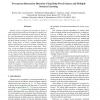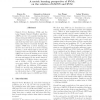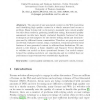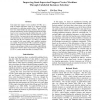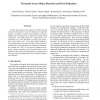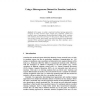168
click to vote
CVPR
2012
IEEE
13 years 2 months ago
2012
IEEE
Human activity recognition has potential to impact a wide range of applications from surveillance to human computer interfaces to content based video retrieval. Recently, the rapi...
106
click to vote
TOG
2012
13 years 2 months ago
2012
Humans have used sketching to depict our visual world since prehistoric times. Even today, sketching is possibly the only rendering technique readily available to all humans. This...
127
click to vote
JMLR
2012
13 years 2 months ago
2012
Support Vector Machines, SVMs, and the Large Margin Nearest Neighbor algorithm, LMNN, are two very popular learning algorithms with quite different learning biases. In this paper...
121
click to vote
AUSAI
2011
Springer
14 years 8 days ago
2011
Springer
The amount of user generated content on the Web is growing and identifying high quality content in a timely manner has become a problem. Many forums rely on its users to manually r...
137
click to vote
AAAI
2011
14 years 9 days ago
2011
Semi-supervised support vector machines (S3VMs) are a kind of popular approaches which try to improve learning performance by exploiting unlabeled data. Though S3VMs have been fou...
112
click to vote
ICCV
2011
IEEE
14 years 9 days ago
2011
IEEE
We describe an approach to category-level detection and viewpoint estimation for rigid 3D objects from single 2D images. In contrast to many existing methods, we directly integrat...
129
click to vote
SDM
2011
SIAM
14 years 3 months ago
2011
SIAM
In many real world prediction problems the output is a structured object like a sequence or a tree or a graph. Such problems range from natural language processing to computationa...
154
click to vote
EUROCON
2011
14 years 3 months ago
2011
—This paper focuses on Audio Event Detection (AED), a research area which aims to substantially enhance the access to audio in multimedia content. With the ever-growing quantity ...
136
click to vote
BMCBI
2011
14 years 3 months ago
2011
Background: Protein secondary structure prediction provides insight into protein function and is a valuable preliminary step for predicting the 3D structure of a protein. Dynamic ...
142
click to vote
AI
2011
Springer
14 years 3 months ago
2011
Springer
In this paper, we adopt a supervised machine learning approach to recognize six basic emotions (anger, disgust, fear, happiness, sadness and surprise) using a heterogeneous emotion...
